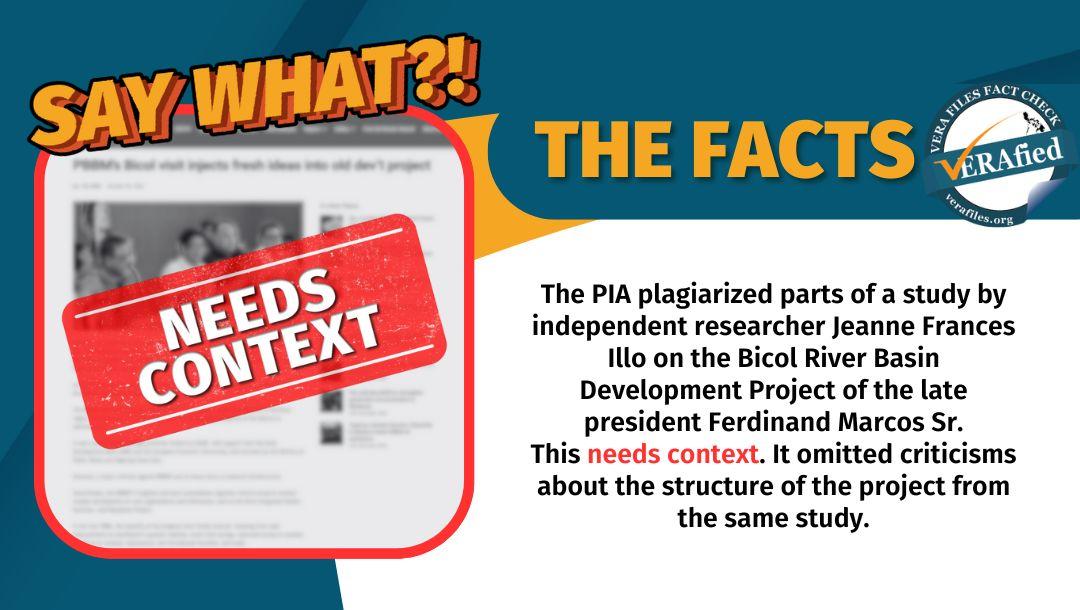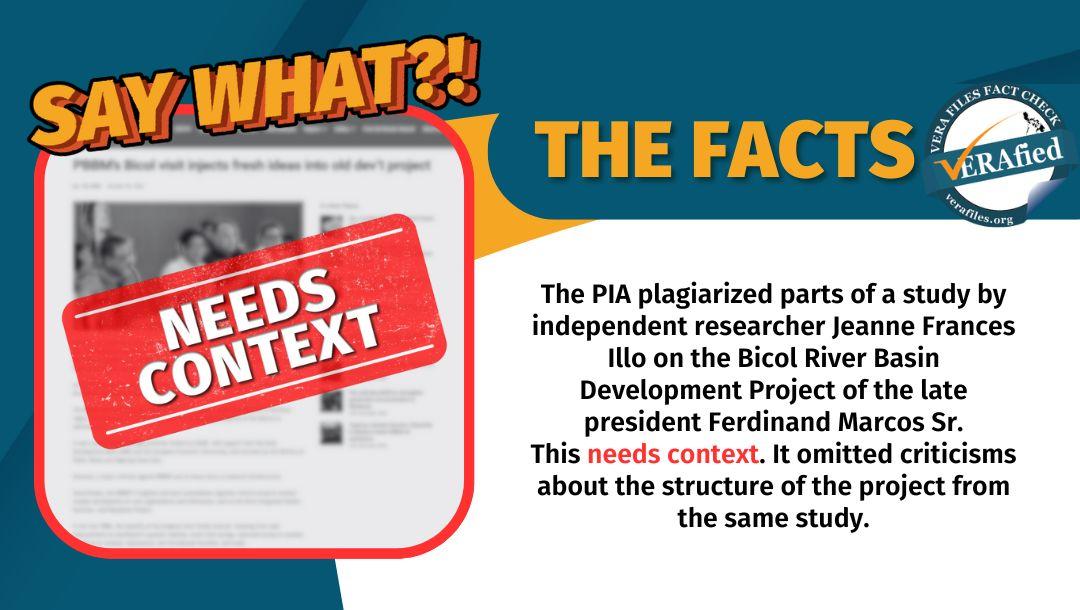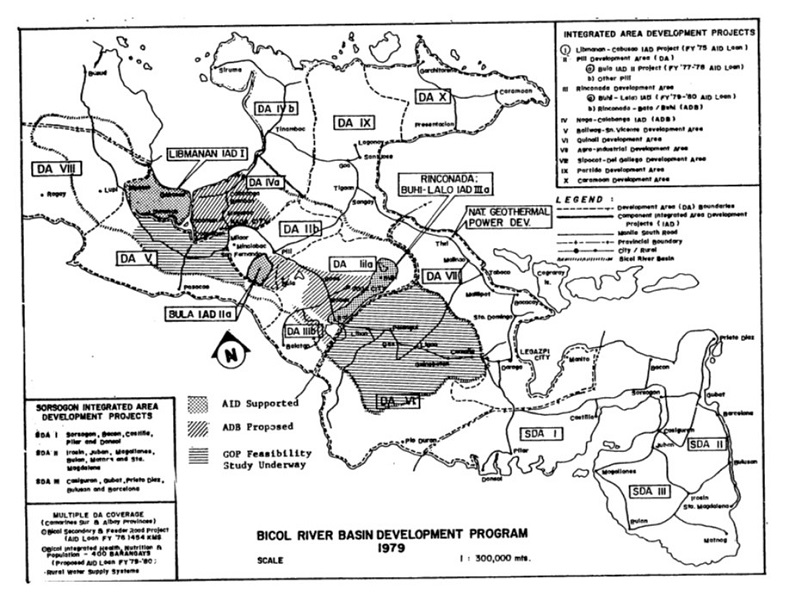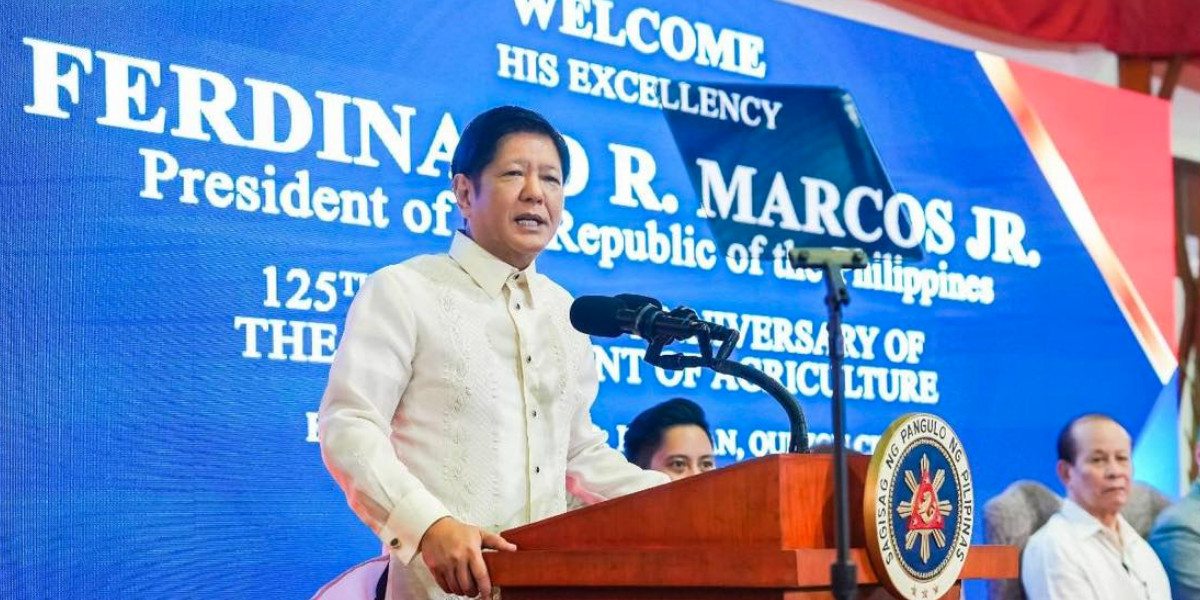State-owned Philippine Information Agency (PIA) plagiarized parts of a study by independent researcher Jeanne Frances Illo on the Bicol River Basin Development Project (BRBDP) of the late president Ferdinand Marcos Sr.
The PIA article omitted context from the same study that criticized the structure of the project, which President Ferdinand Marcos Jr. wants to revive to address flooding in the Bicol Region.
STATEMENT
The PIA published the news article on Oct. 26 as it reported on a situation briefer Marcos Jr. conducted earlier that day in Naga City when he visited the areas badly hit by severe tropical storm Kristine.
Miguel Paolo P. Reyes, a university research associate of the Marcos Regime Research program of the University of the Philippines’ Third World Studies Center, flagged the PIA’s plagiarism in a Nov. 11 article published on VERA Files.
The PIA article detailed the features of the BRBDP, which Marcos Jr. mentioned as a long-term solution to the flooding problem in the Bicol Region.
The authorless report said:
“The BRBDP was initiated in the 1970s to focus on geography-based development in the Bicol region. This was then one of the major regional development programs of the Marcos Sr. administration.
It was a $46.8-million package primarily funded by USAID, with support from the Asian Development Bank (ADB) and the European Economic Community, and overseen by the Ministry of Public Works and Highways back then.”
Source: Philippine Information Agency, PBBM’s Bicol visit injects fresh ideas into old dev’t project (archive), Oct. 26, 2024
The article went on to praise the supposed benefits of the Marcos Sr. project and detailed sites where the project operated. It read:
“Nevertheless, the BRBDP’s irrigation and land consolidation (agrarian reform) projects marked notable development of rural organizations and institutions, such as the Bicol Integrated Health, Nutrition, and Population Project.
In the mid-1980s, the benefits of the program were finally noticed, resulting from road improvements as manifested in greater mobility, travel time savings, improved access to markets as well as to medical, educational, and recreational facilities, and trade.
Also, some 400 target barangays were provided with communal water systems and environmental sanitation facilities. Coinciding with the programs social, economic, and health benefits, mortality and malnutrition rates in the provinces of Camarines Sur and Albay had markedly gone down.”
FACT
More than 50% of the PIA article, or 15 out of 21 paragraphs, were plagiarized content from a study by independent development consultant Jeanne Frances Illo. Most of these paragraphs lifted text from the study nearly word-for-word. The report also copied from other studies cited in Illo’s paper.

The study, titled “Models of Area-Based Convergence: Lessons from the BRBDP and Other Programs,” documents the operations of the scrapped flood control project and provides criticism and recommendations on it.
It was published in the 2012-2013 edition of the Philippine Human Development Reports and funded by the United Nations Development Program.
The PIA article also omitted crucial context regarding criticism of the BRBDP as a project led at the national level, which is what Marcos Jr. seeks to recreate.
Though the PIA report copied specific points of criticism of the study, Illo went on to conclude that area-based inter-local initiatives better responded to localities’ needs than nationally-funded and -coordinated programs such as the BRBDP, despite the local projects’ financial volatility.
“Sustainability of both the [local project alliances] and their endeavors is dependent on whether it serves the common good of its members, ensuring that they continue to pool their resources to achieve their objectives as a group,” Illo wrote.
Marcos Jr., at the Oct. 26 briefing, instructed the Department of Public Works and Highways (DPWH) to revisit the BRBDP. Secretary Manuel Bonoan responded that the agency was already studying plans for it.
The president also reported on Nov. 6 that the DPWH was working with the Department of Environment and Natural Resources and the Department of Interior and Local Government to coordinate solutions for flooding in the Bicol River Basin.
While the PIA article claims long-term benefits from the BRBDP despite minor setbacks in execution, Illo suggests benefits could not be fully ascertained due to a lack in comprehensive documentation.
“The BRBDP seems to have long-lasting benefits at least in the community visited… although in that community and elsewhere, problems persist, some linked to failed projects of BRBDP, while others (like perennial flooding) were due to the nature of a river basin,” the study reads.
BACKSTORY
The BRBDP was initiated under the Marcos Sr. administration as a measure to enhance economic development in an area wrought by flooding and high poverty incidence. It was considered an experiment in geography-based planning.
Despite the focus on physical infrastructure such as roads and waterways, as Illo had written, social assistance programs were eventually integrated into the project.
At the Oct. 26 briefing in Naga City, Marcos Jr. proposed a revival of the BRBDP but focused only on flood control. “Now, we have to focus specifically on flood control. And the others, marami naman tayong mga plano for the rest of it,” the president said.
The original BRBDP was eventually phased out in 1989. Contrary to what Marcos Jr. claimed at the same briefing, its halting was not due to the change in regimes in 1986.
Then president Corazon Aquino issued Executive Order No. 374, which abolished the BRBDP due to the establishment of regional development councils assigned to oversee such projects.






